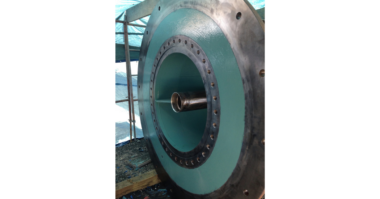Attaining optimal efficiency in the operation of centrifugal pumps is crucial for industries aiming to reduce energy consumption and operational expenses. Below is a series of measures and strategies to optimize centrifugal pump efficiency.
Pump Selection for System Compatibility:
- Systematically select a centrifugal pump that aligns precisely with the hydraulic requirements of the system. Parameters such as flow rate, head, and fluid properties must be meticulously considered to avoid inefficiencies associated with over-sizing or under-sizing.
Operating at the Best Efficiency Point (BEP):
- Ensure the pump operates within or as close to its Best Efficiency Point (BEP) as possible. Deviations from this critical point can result in substantial reductions in efficiency, warranting precise monitoring and control.
Proactive Maintenance Program:
- Implement a comprehensive maintenance program featuring scheduled inspections, lubrication routines, and the timely replacement of worn components, including seals, bearings, and impellers. This proactive approach is crucial for sustaining long-term efficiency.
Shaft Alignment Optimization:
- Guarantee the precise alignment of the pump shaft with the motor shaft to mitigate detrimental effects such as excessive vibration and consequential efficiency losses due to misalignment.
Impeller Trimming for Adaptation:
- When system requirements evolve, contemplate impeller trimming to fine-tune the pump’s performance to match the new operational conditions. This measure is particularly beneficial when dealing with oversized pumps, promoting energy efficiency.
Efficiency Monitoring through Instrumentation:
- Implement a flow and pressure monitoring instrumentation to track the pump’s performance over time continuously. Periodic data analysis facilitates early detection and mitigation of efficiency-related issues.
Optimized Pipe Design and Sizing:
- Engage in meticulous design and sizing of the piping system to minimize frictional losses and guarantee a streamlined, non-restrictive flow path for the fluid. Avoiding unnecessary bends, restrictions, and undersized pipes is essential.
System Head Reduction:
- Whenever feasible, endeavor to lower the system’s total head requirements. This strategic reduction enables the pump to operate closer to its BEP, improving efficiency.
Variable Speed Drives (VSDs) for Dynamic Control:
- Explore the application of Variable Frequency Drives (VFDs) and other variable speed drives to modulate the pump’s rotational speed in response to varying system demands. This can significantly reduce energy consumption during periods of low demand.
High-Efficiency Motor:
- Use only energy-efficient motors that match the pump’s power requirements. High-efficiency motors are pivotal in reducing energy use and elevating overall system productivity.
Pump Placement for Cavitation Mitigation:
- Install the pump at an optimal location within the process to minimize suction lift and mitigate cavitation risks – these factors can seriously affect performance.
Operator Training:
- Conduct a thorough training program for pump operators, emphasizing correct startup and shutdown procedures. Encourage operators to promptly report any unusual sounds or vibrational observations for timely issue resolution.
Implementing these steps and maintaining a focus on efficiency can significantly improve the performance and energy efficiency of your pump, leading to cost savings and reliable operation.





Comments